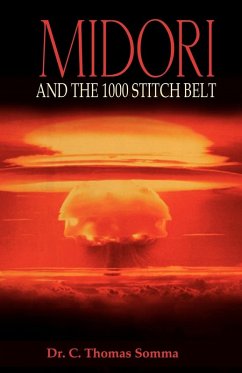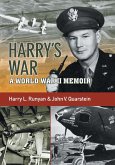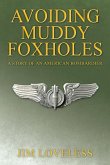Midori and the 1000 Stitch Belt is a fictionalized account of the Pacific theatre of World War II told through the unique perspective of a courageous Japanese midwife wedded to a General in the Imperial Japanese Army. Her husband, General Tanoka, led the barbarous assault on China in 1937 ending with the slaughter of 330,000 innocent civilians at Nanking. It tells of her valiant efforts to preserve the lives of her three sons, all serving in the Imperialistic Army and to keep their names from being embroidered on their families' 1000 Stitch Belt, containing five centuries of her husband's lineage of warriors, all who died for the glory of their empire. Midori's profession as a midwife to deliver and preserve life in an imperialistic society fanatically bent upon destroying it.. It is a tale of the senseless destruction of human lives by those caught up in the fanaticism of the times, and who willingly sacrificed themselves and others for the glory of their Emperor. The story transverses from the horrors of the invasion of China in 1937, to the ultimate rape and slaughter of innocent civilians at Nanking, then to the invasion of the Philippines, Iwo Jima, and Okinawa. At Okinawa our forces are confronted with suicide attacks from the Japanese in many forms. First by the Shinya torpedo boats, to the Kaiten single manned human torpedo submarines, the full fanatical fury of the Kamikaze dive planes, and their devastating impact on the allied support ships and carriers. Documented, and seen for the first time in any war, the youth piloted Ohku's. This last hope of the losing Army, were glider bombs with youths sealed inside, and dropped from the bellies of bombers at Okinawa. The sealed pilots then steered their Ohku's into their targets, in a final fanatical display of allegiance to their Emperor. Midori's youngest son unknowingly, is deliberately placed in that position by a General Hironaka, to serve as a sacrificial lamb and give the youth of Japan a young national hero in order to recruit them in the final defense of the invasion of their homeland, which the General now accepts as inevitable. Another of Midori's sons, a third year medical student, assigned to the secret Unit 731 at Pingfan in Manchuria, the human experimental camp, to serve as medical assistant on human experiments involving germ and biological warfare, freezing and burning experiments, and as surgical assistant on the horrid vivisections performed on unanaesthetized prisoners, males and females alike. It is eventually from Midori's medical colleague and close friend, Father Krozier that she is finally made aware of the magnitude of the horrors perpetrated by her husband at Nanking. Father Krozier, a German Jesuit priest, served as one of the physicians who treated some of the surviving victims at Nanking within a "Safety Zone", an area cordoned off by the Germans who were then allies of Japan. It served as shelter for woman fortunate enough to avoid rape and mutilation. It was within that artificial zone that Krozier eventually meets, face to face, Midori's husband, Tanoka. The final chapter takes Midori to her inevitable conclusion at Hiroshima. The book is rich in Samurai history and Shinto Gods. From Nanking to Iwo Jima, Okinawa, Manchuria, and finally Hiroshima, This is a fictional account, dramatically portrayed through lives caught in the maelstrom of war, and each a victim or cause of those terrible times. This book remains true to all of the historical events of the Pacific Theatre of World War II, and is divided into four sections: Nanking, Kamikaze, Unit 731, and Hiroshima.
Hinweis: Dieser Artikel kann nur an eine deutsche Lieferadresse ausgeliefert werden.
Hinweis: Dieser Artikel kann nur an eine deutsche Lieferadresse ausgeliefert werden.








